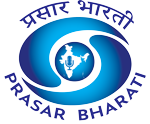The Indian Space Research Organisation (ISRO) on Sunday successfully launched Navy’s GSAT-7R (CMS-03), India’s heaviest communication satellite, marking a major milestone in country’s space and defence capabilities. The launch took place from the second launch pad of the Satish Dhawan Space Centre in Sriharikota, Andhra Pradesh, at 5:26 PM, with the satellite being placed precisely into its intended orbit by the LVM3-M5 (Baahubali) rocket.
The 4,410 kg multi-band communication satellite, designed to provide services across India and the adjoining oceanic region, is expected to operate for at least 15 years. The indigenously developed satellite will significantly enhance the Indian Navy’s space-based communication and maritime domain awareness capabilities, featuring advanced, state-of-the-art technologies tailored to meet operational requirements.
ISRO Chief Narayanan Hails ‘Shiny Example of Aatmanirbhar Bharat’
Commending the successful mission, ISRO Chairman V. Narayanan described CMS-03 as “another shiny example of Aatmanirbhar Bharat,” crediting the achievement to the relentless efforts of ISRO teams across multiple centres despite challenging weather conditions.
“The CMS-03 satellite is a multi-band communication satellite with coverage over a wide oceanic region, including the Indian landmass. It incorporates a host of new technologies and is designed to provide services for at least 15 years. The entire ISRO team deserves high praise for executing this complex mission flawlessly,” Narayanan said.
He revealed that ISRO had also conducted a crucial in-flight experiment involving the indigenously developed C-25 cryogenic stage, successfully igniting the thrust chamber after satellite deployment. This achievement, he said, would pave the way for future mission flexibility, enabling multiple satellite placements in varied orbits.
Highlighting the performance of the LVM3-M5 rocket, Narayanan noted that the vehicle had lifted 4,410 kg to an elliptical orbit, its highest payload ever, exceeding its standard 4,000 kg capacity to Geosynchronous Transfer Orbit (GTO). “All eight launches of the LVM3 have been successful, making it a 100% reliable vehicle. The same launcher is earmarked for our upcoming Gaganyatri-2 mission,” he added.
Mission Significance
The CMS-03 satellite’s deployment marks a significant step in India’s efforts to modernize naval communications through indigenous technology. With enhanced coverage over the Indian Ocean Region, it will boost the Navy’s network-centric operations, improve real-time coordination, and expand India’s strategic capabilities in space.
ISRO’s achievement not only reinforces India’s growing self-reliance in space technology but also underscores the nation’s steady march toward global space leadership under the vision of Aatmanirbhar Bharat.
(With inputs from ANI)














